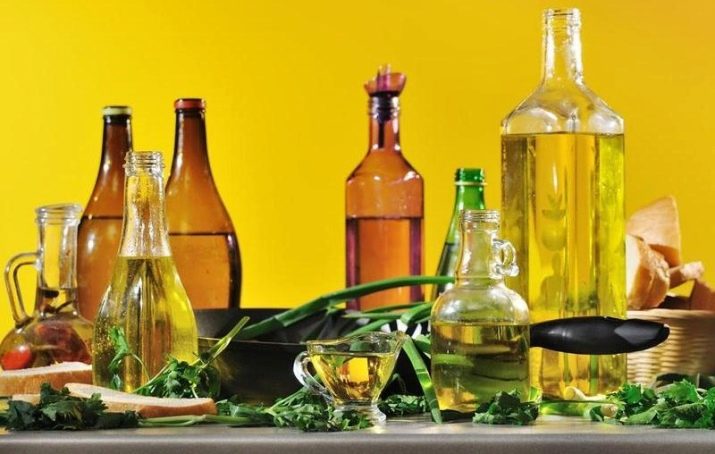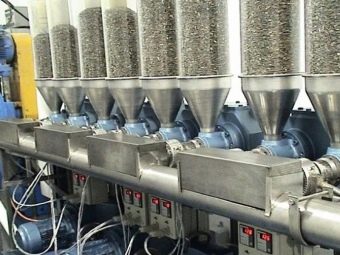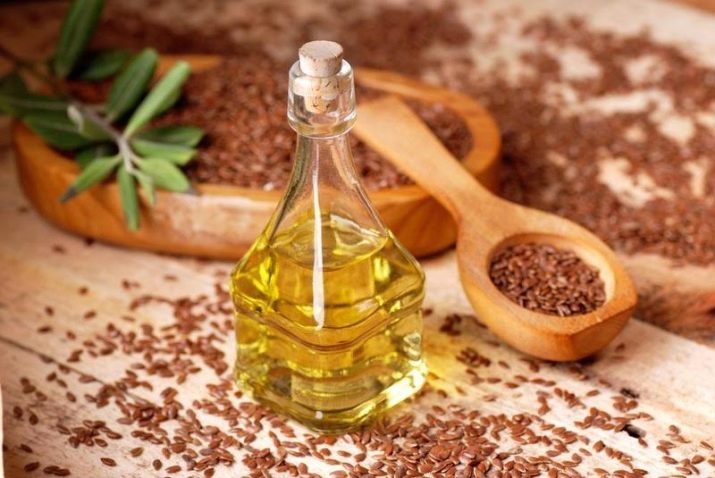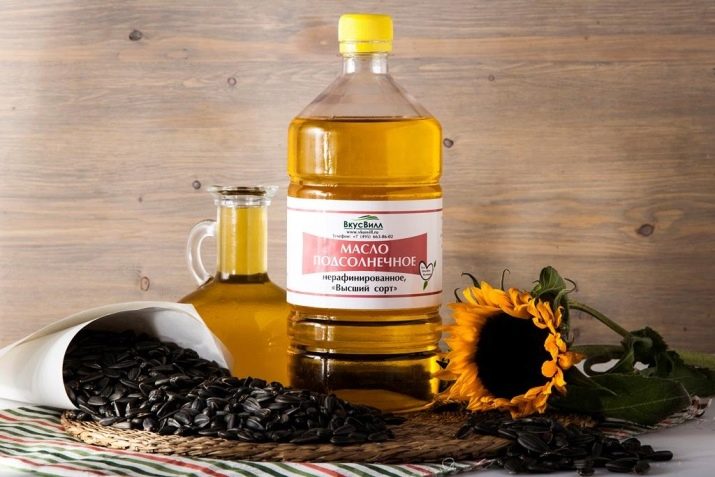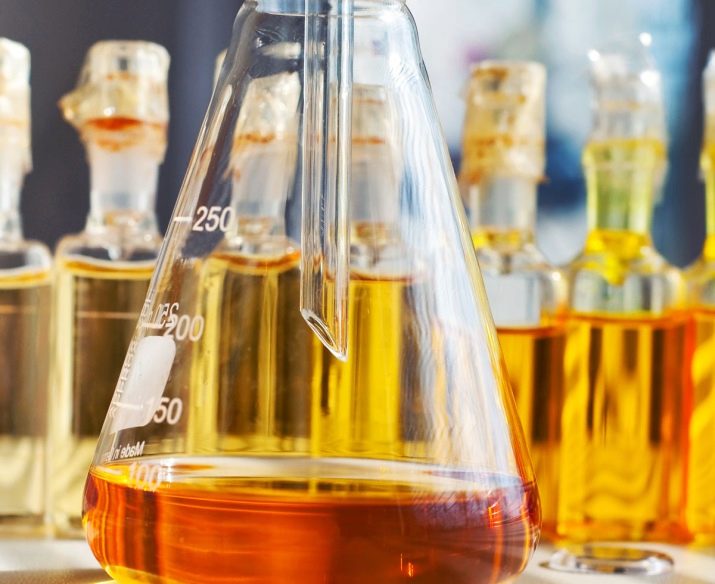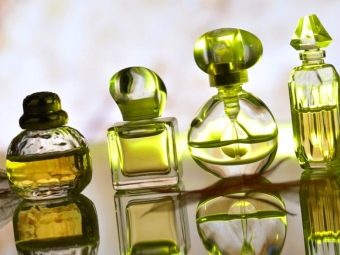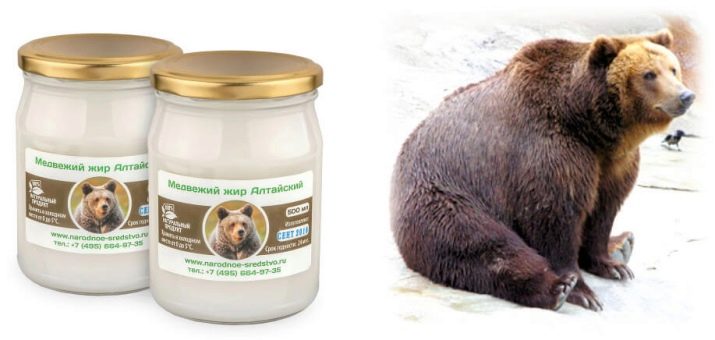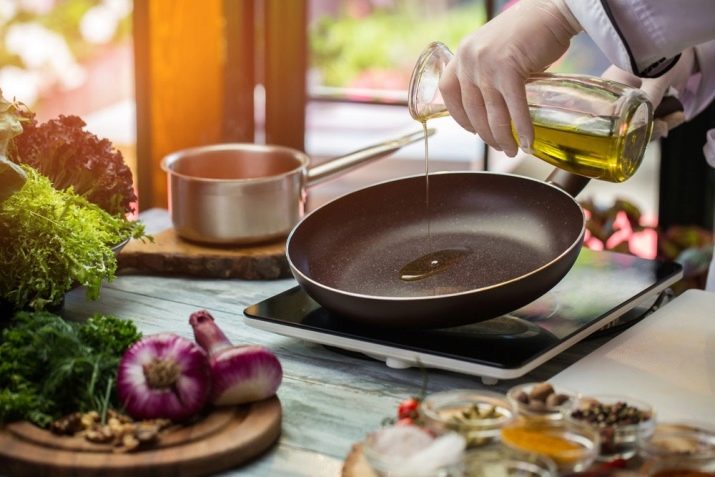Vegetable oil: what is it, what is the harm and benefit, what is the most useful?
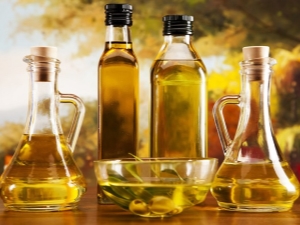
Oils from various plants have been used for a long time. The scope of their application is quite wide - from the preparation of various dishes to the creation of cosmetics for body and hair care. In every nation, preference was given to a certain type of oil. Slavs cooked and used hemp, Greeks and Egyptians used olive oil, Asians and people of the East traditionally used palm oil, Africans used coconut oil.
What is it and how does it look?
The oils of various plants are used by mankind from time immemorial. In ancient Egypt, valuable oils of olive, sandalwood, cardamom and others were collected, using them for healing various diseases, as medicines and as a basis for incense. With their help, they prepared healing balms and produced mummifications.
The ancient people used oils for food, knowing about their nutritional properties. The Greeks made sea buckthorn compounds, using them in military campaigns as disinfecting wounds. In the 17th century, exotic sunflower seed oil from South America, a new continent, and amaranth solid oil were brought to Europe. So familiar to all the product came to Russia. Before that, sesame was used, adding it to soups, porridges and pastries. Traditionally, oils are divided into food and essential oils, as well as differ in purpose, the initial raw material from which the product is mined, and production technology.
A large supply of vegetable fat in the composition of oilseeds is an inexhaustible source of useful elements and minerals. Often it is extracted from the seeds, since most of it is contained there. There are liquid and solid forms. Moreover, oils in liquid form are the most common.
Solid fats are also called butters. These can be natural oils, for example, coconut, argan, shea butter, or their synthetic analogues. In any case, their consistency softens and becomes liquid at 30 degrees.
Oils are also distinguished by production method. The safest of them is cold pressing or pressing. Oilseeds (selected seeds) are placed under the press and crushed, and the resulting raw materials are collected, filtered and distributed in containers. The oil yield in this production method is 26%. The product is marked "extra" - the highest quality.
The next oil production method is pressing. For its production take the usual vegetable seeds, which are heated in special ovens before squeezing. The yield of the finished product is much higher - 45%. But the quality of the oil is much lower than the previous one.
The most inexpensive and conservative method is the so-called extraction. For him use low-quality organics. The method involves the use of chemical elements - refined products for the separation of oil by dissolution and condensation. Next, the oil is extracted with steam and remove residues of harmful substances with alkali.
Extracted oil becomes refined, bypassing several stages of cleaning: evaporation (hydration), freezing, refining and deodorizing.
In the phase of hydrogenation, the oil base is deprived of phospholipids, which are lost during long storage in a cloudy precipitate. Freezing removes harmful tar and wax. Refining completely cleans the oil from any impurities, neutralizes the color. Deodorization additionally cleans the product from smell.
Vegetable product, extracted by pressing, frozen and purified, used for food. The most popular is sunflower oil, produced from sunflower seeds. Then - olive, rich in monounsaturated fats, resistant to high temperatures.
Benefit and harm
The nutritional and healing value of oils is justified by the presence of fatty acids and other useful elements.
Saturated acids have antiseptic and bactericidal actions, give the product unique properties to destroy the pathogenic microflora, and also participate in the process of building collagen and elastin fibers. These fats are found in sesame, soybean, and cottonseed oils. Therefore, these products are used in cosmetology for the enrichment of compounds, emulsions and elixirs.
Monounsaturated fatty acids are responsible for the normal metabolism, clean the walls of blood vessels, break down cholesterol plaques, adhesions, contribute to the restoration of cell membranes. Hepatoprotective effect due to the presence of palmitoleic acid class Omega-7, as well as oleic acids contained in grape, sesame, rapeseed and olive oils.
Polyunsaturated fatty acids - alpha- and gamma linoleic, normalize hormones in the body, protect blood vessels from atherosclerosis. They are rich in sunflower, mustard, corn, rapeseed, cedar, soybean and other oils.
Among other things, plant oils contain a number of essential substances and elements: vitamins, including D, B, A, E, nicotinamides and phospholipids (lecithin). Phosphatidylcholine protects the liver from harmful glycogen and decomposition products, and also promotes the breakdown of fats, participating in carbohydrate metabolism.
Many fatty acids are not produced in the human body. Therefore, they must be obtained from the outside with food. Fatty acids have a pronounced therapeutic effect:
- are lipotropic, reduce the presence of fats in liver cells;
- support the turgor of blood vessels, preventing cholesterol sedimentation;
- they restore cells, being a building material of membranes and smooth muscles;
- normalize the formation and outflow of bile;
- are powerful antioxidants, detoxify, free radicals and degradation products;
- cures tumors, including malignant and other neoplasms;
- smooth climax phenomena, normalizing hormones;
- treat constipation and improve intestinal motility;
- prolong youth and protect against wrinkles;
- restore brain cells, improve the conductivity of neurons;
- restore the structure of bones and cartilage tissue after injuries and surgery;
- stabilize the immune system and mental state.
This is not the whole list of beneficial qualities of oils for human health.
Vegetable oils are used to treat many diseases.
- Pancreatitis and other pathologies of the pancreas. A feature of the disease is poor absorption of fats, so oil should be consumed exclusively in medicinal doses and only in the stage of recovery.
- Care should be taken to apply oils to humans. with a different form of diabetes. Low-carb diets can lead to a deficiency of acids involved in the production of hormones, including insulin. By adjusting the daily intake of the herbal product, you can significantly improve the condition of diabetic patients. Moreover, the consumption rate should not be higher than two tablespoons. Residents of the Mediterranean rarely suffer from similar diseases caused by metabolic disorders. As a result of the research, it was found out that this is facilitated by the constant consumption of olive oil, as well as products and dishes with its content.
Enter it into the diet of diabetics should be gradually, with great care, only in small doses. But these doses can work wonders, and in many cases contribute to the complete healing of the disease.
- In diseases of the digestive system and gastrointestinal tract, to remove toxins, cleanse the colon, as well as for constipation and hemorrhoids.
- For hypertension, hypotension and any vascular problems, including disorders of the circulatory system and heart, as well as heart attacks, strokes and other diseases.Fats make blood vessels elastic, restoring their structure, due to which the blood flow normalizes and pressure returns to normal.
- With gout and arthritis in complex therapy and as an auxiliary complex.
- For the treatment of the thyroid gland and normalization of the endocrine system.
- With colds and viral infections as a general tonic.
- As a massage base for the treatment of stinging, lumbago and rheumatic joint pains, as well as with radiculitis and other inflammatory diseases, oils enriched with ethers with healing properties are used.
- In cosmetology The use of vegetable oils is very wide. In regenerative medicine it is used as a regenerating agent, restoring the structure of cells and tissues. In folk medicine is used in the composition of external and internal funds, as well as in complex methods of treatment of certain diseases.
There are practically no contraindications to the use of vegetable oil. The main condition is its moderate consumption.
And yet there are a number of features that you need to know.
- Unrefined product should not be used for deep-frying and frying. This is fraught with harmful consequences, since when heated from the oil released chemicals and carcinogens. Once in the human body, they can cause irreversible pathological processes. It is best to use refined refined oil.
- Do not boil and heat the oil strongly before use. Know and take into account the point of smoke, which are critical marks - indicators of a decrease in the level of utility of the product. Beyond this point, most of the nutrients evaporate. Therefore, it is advisable to use the vegetable product in the cold.
- The optimal heating temperature is 80 degrees Celsius. Behind this point in the composition of the oil is broken. And for various oils, this figure varies. For grape seed and rapeseed and corn oil - 160 degrees, for sunflower and soybean - 170, for olive and peanut - 210-220, for palm - up to 240 degrees Celsius.
- Especially dangerous is the reuse of oil without cleaning. This composition is one hundred percent holder of carcinogens.
- Unrefined product is prone to rapid turbidity with the loss of useful substances. Four months after production and bottling, this oil becomes cloudy, gives a precipitate and becomes bitter. This happens with refined oil with improper storage. Use the spoiled product for cooking is impossible.
- Do not exceed the daily need for oil. It averages 100-110 grams. Excessive fat intake can trigger excess cholesterol and increase body weight, which is highly undesirable, especially for cardiac and vascular problems.
- In the active phase of pancreatitis, cholecystitis, stomach ulcers, gastritis, as well as in case of renal failure and in the period of exacerbation, oil should be temporarily excluded from use.
- With individual intolerance to the product and allergies.
It should be remembered that if it is excessively misused, even the most useful product can be harmful.
Which oil is considered the most useful?
In the chain of essential oils in the first place is olive. In its usual form, it is similar to sunflower, but when heated, by contrast, it does not lose its qualities and properties. Oleic fats do not oxidize or decompose under the influence of temperature.
Sunflower seed oil contains much more minerals and vitamins than other products. Therefore, it can be easily attributed to useful products. Its main advantage and advantage in the content of a powerful antioxidant - tocopherol, in sufficient quantities.
Next comes flax oil - the lowest-calorie product of this line. It is often used in the dietary aspect, as well as in cosmetology.It normalizes the level of hormones, suitable for both women and men. Nutritionists advise to take two tablespoons of butter with cottage cheese daily - this is the best prophylactic against the formation of cancer cells. This method has fully proved its viability, thanks to the research of D. Budwig. It is successfully used to treat autoimmune and heart diseases, as well as with age-related changes of a climax nature.
Sesame oil is rich in potassium and calcium. It is useful to take to restore bone and cartilage tissues, as well as for gout and other diseases of the skeletal system and connective tissue. Often use a dark product, because it is more saturated in composition. Butter is not to be heated, they are filled with vegetables, first and second courses, they are used exclusively in cold form.
Mustard oil is a natural preservative, as it contains essential oils along with fatty acids. When heated, it does not lose its properties, and baking with it is covered with a crusty, not stale crust.
Chemical composition
Oils consist of chemical elements:
- arachidonic, palmitic, linoleic, stearic and oleic acids;
- vitamin A (retinol), improves vision, the overall condition of the skin, its structure and the bloodstream;
- vitamin D, positively affecting the functioning of the thyroid gland, which is involved in the regulation of the endocrine and nervous systems, and also binds calcium in the skeletal system, preventing its loss and leaching;
- vitamin E (tocopherol)which removes decomposition products, toxins and poisons from the human body;
- vitamin F, contributing to the strengthening of connective tissue and smooth muscle fibers, restoring communication between neurons, thereby improving cognitive abilities;
- omega-3 and -6 fatty acids Vitamin F levels are essential fats for nerve repair and treatment of neurological diseases;
- presence of mineral substances: potassium, calcium, boron, iron, copper, molybdenum, selenium, zinc, phosphorus, magnesium, chromium and manganese makes the oil the most useful product;
- esters and polyesters, proteins, lecithin, tannins and other micro-and macronutrients, among which are essential acids, saturate the body, filling the daily need for substances necessary for normal human life.
Contrary to popular belief, vegetable oils do not contain cholesterol. Cholesterol is a substance, a hormone that is produced by the human body under the influence of certain elements. Its presence is necessary for the body, but the lack or excess is harmful. Excessive production of cholesterol can clog the blood vessels, which can adversely affect the general condition of the body. Fatty acids in large quantities may well trigger the production of cholesterol.
Experts recommend alternating oils, using them alternately. In the arsenal of a good housewife should always be 3-4 of their kind.
Kinds
There are several types of vegetable oils. They all depend on the method of development.
Unrefined sunflower oil produce by pressing the seeds under the press with pre-heating. Spent cake is used as a feed base in animal husbandry. This product has a pronounced smell of seeds, has a mild taste of roasted seeds. Unrefined oil contains more nutrients than purified. Vitamin E contains 70 mg per 100 g, while olive contains only 25 mg. It contains various impurities, soaps, pigments and odorants, the constant use of which is not desirable for health. Crude oil is added to salads and other dishes, using it exclusively cold.
In the table of technical conditions GOST 1129-93 it is indicated that in the second grade, a slight smell of mustiness and bitterness in the taste characteristic of sunflower oil is the norm that is quite acceptable in a natural product.
- Refined or refined oil is odorless and tasteless. The derivative mass undergoes a purification process using chemical reagents. Passing several cleaning methods, including manual and mechanical, raw materials are gradually freed from color, taste, even density changes. All that remains is a fatty base, resistant to heat and convenient to prepare. Therefore, this waste oil is used in cooking for cooking hot dishes and preservation.
- In the process of hydrogenation, vegetable oils become hard. Hydrogenated products - butter or margarine, are widely used in the food industry. For their production, the liquid base is first treated with nickel oxide, then placed in a special chamber, where the mixture is hydrolyzed under the influence of hydrogen and high pressure. Next, enter into the emulsifiers and starch, cleaned from color and smell. It turns out solid fat - the basis to which you can add flavors, dyes and other ingredients to give the product the desired qualities and properties. Hydrogenated fats are transzomers that replace saturated fats in the body.
Such a substitution does not bode well and can adversely affect health. Regular consumption of this product can cause a number of diseases due to the accumulation in the body of low-density cholesterol.
- Deodorized oil It is prepared exclusively under production conditions, where it is cleaned with hot steam in a special chamber in the absence of oxygen. In the process there is a release from color, smell, taste, sediment. At the same time, the vitamin complex, minerals and beneficial elements remain. This oil is almost colorless, well stored for a long time, suitable for heating and deep-frying.
All types of plant products are produced in accordance with international quality standards and are quite suitable for consumption.
Rating of the best manufacturers
Sunflower oil in Russia appeared relatively recently - in the XVIII century. Prior to this, sesame, linseed and mustard oils were used. At first it was supplied from Europe, but soon the sunflower got accustomed to the Russian open spaces and the production of oil began to grow on a larger scale.
Today this type of vegetable oil is the most popular in comparison with other similar products. Analogs to sunflower oil are vast. They are all different in manufacturing method and quality. In many ways, high product performance depends on the raw materials. For its production they use sunflower seeds grown in the southern regions of the country. They enter the oil mills and are processed by any of the methods described above. Then, manufacturers, using their brand names, deliver the product to the store shelves.
In the list of the best manufacturers of the finished product are domestic producers. According to an independent study, among enterprises engaged in the production of purified vegetable product from sunflower seeds, the places were distributed as follows:
- JSC Efko;
- CJSC Donmasloprodukt;
- Cargil LLC;
- LLC Agricultural Enterprise "South";
- Dixy Group;
- LLC "Company" Blago ";
- OJSC Holding Solar Products;
- JSC "Fat plant Yekaterinburg".
Among the unrefined oils:
- LLC "Company" Blago ";
- LLC Agricultural Enterprise "South";
- PC LLC "Our product";
- JSC Efko.
Products "Zlatozhar", "Addin", "Caroline", "Kargil", "Kuban", "Rossiyanka", "Sloboda", "Generous Summer", "Gifts of Kuban", "Selyanochka" meets all standards and requirements, is of high quality product of manufacture.
Application
Useful properties of the oil are used in folk medicine to treat hair, skin and nails. They are also used as a massage base, adding to them various essential and aromatic oils. Bases on oil use in cosmetology and perfumery branch.
There are varieties of oils that are used in certain cases with problems with hair. Thus, with hair loss and hair loss, castor and burdock oils are used, olive and unrefined sunflower oil is used for nutrition, jojoba and grape oil is more suitable for moisturizing, and rose and almond oils are suitable for enhancing growth and strengthening hair follicles.
Each type of oil is suitable for a particular type of hair: for those prone to fat - macadamia oil, for dry - wheat germ, for brittle and damaged - coconut and peanut oils. To restore damaged curls using milk Thistle oil. It is added to a small amount in a balm rinse, which is applied to the scalp and washed off after 5-7 minutes.
In the fight against dandruff, irritation and itching helps mask from heated sunflower oil. It is rubbed with a cotton swab in the skin of the head about half an hour before washing your hair.
In terms of their medicinal qualities, cosmetic oils significantly exceed the usual ones, especially in the form of special products for skin and hair care.
In the cosmetic industry, these oils are presented in products for the care of mature and dry skin. They have pronounced softening, nourishing and moisturizing effects.
In combination with other elements, the oil enhances the therapeutic effect. Any purchased lotion, emulsion or cream can be enriched with cosmetic oils: peach, walnut, sea buckthorn, watermelon, coffee, primrose, poppy, St. John's wort, and others.
In folk medicine, use the usual edible oils. They are included in the composition of masks for hair and skin. For massages using complex compositions of conventional, cosmetic and essential oil extracts, varying them in accordance with the purpose. For example, in case of lumbar pains, tea tree oil is rubbed into the desired zone, which has a disinfecting and analgesic effect. In gout, a compress with cucumber oil is applied to the sore spot for the outflow of fluid from the joints. For relaxing massage apply mints, and for warming - mustard.
For cosmetic and therapeutic massages, special oil formulations with lavender, green tea leaf oil and juniper oil are also used. A few drops of the elixir can work wonders: chronic pain disappears, the overall skin tone rises, it becomes clean, healthy and elastic.
In beauty parlors and salons, oils are used for manicure and pedicure, as part of the basis for lamination of hair and nails, as well as in complex therapy for the restoration and stimulation of hair follicles. The molecular composition and density of oils allows them to be applied to sensitive skin around the eyes.
Oil bases, unlike collagen, are able to penetrate into the deeper layers of the skin, restoring its structure from the inside. That is why they are one of the most effective products in the cosmetic industry.
To soften the hardened skin of the feet, use a mixture of linseed and olive oils. They are applied with massage movements after the bath procedures on the previously steamed skin, then put on cotton socks.
Flaxseed oil excellently solves split ends of hair, stratified nail plates, and also relieves corns and corns.
Sunflower oil with peanut is an excellent tool for tanning. Slightly heated composition is applied to the prepared clean skin, leaving until completely absorbed, and then soaked with a cotton towel. In addition, this tool protects the skin from ultraviolet radiation, so it can be used as a UV filter.A beautiful, even and safe tan will be provided!
Do not forget about beauty baths. To prepare take half a glass of peach or apricot butter and a cup of cream. All poured into a hot bath. You can additionally add a cup of honey and any essential oils, then the healing effect of the oils will be complemented by an aromatic effect.
This evening procedure perfectly relaxes, soothes the nervous system and normalizes sleep. The skin after does not become simply delightful.
For acne, acne and other similar skin problems that may be caused by age-related changes, black cumin oil is used in combination with camphor. The composition is impregnated with cotton pads and make mask covers of problem areas. At the same time clean the intestines by daily consumption of any vegetable oil on an empty stomach.
Heated almond oil, hammered by careful movements into the skin around the eyes and lips, relieves mimic wrinkles and crow's feet. It is the softest of all oil bases and is most suitable for this procedure.
Cedar and pine oils are used for inhalations and compresses in the treatment of colds and viral infections as a bactericidal and antiviral agents. Oil formulations rinse the throat and the oral cavity, thus protecting themselves from pathogenic microbes during the period of rising morbidity and epidemics. This rinse also has a beneficial effect on the condition of the gums and protects against unpleasant odors.
Green coffee oil is known for its ability to fight cellulite, so it is introduced into the composition of means for the body and problem areas. A scrub made from half a cup of wheat germ oil and the same amount of salt is used for stretching. The mixture is massaged problem areas in the shower, then rinsed with clean water.
Rice oil relieves skin from pigmentation and other defects. But you should not apply oil formulations on moles, warts and papillomas, otherwise they will grow and grow in size.
The perfumes used essential oils of vetiver, hibiscus, oleander, lavender, macadamia nuts, mandarin, rose, cornflower, rosemary, coriander, musk, nutmeg, saffron, lemongrass, lime, orange tree, barberry, cedar, patchouli, peony, poppy, edelweiss , magnolia, jasmine, sandalwood, black pepper and others.
The effectiveness of the use of oils for the treatment of seborrhea, eczema and other skin diseases has been proven by numerous studies. Some of its species, for example, peanut, mandarin and grapefruit, are used to treat fungal infections. They treat, at the same time forming a protective medical film on the affected surface.
You can make a universal balm for dressing salads, second and other dishes. To do this, take refined sunflower and olive oils in equal proportions, add fragrant herbs and spices, insist two weeks, then filter and use for its intended purpose.
Butter is also used as a basis for preparing a spicy sauce, which can be filled with any dish. To do this, take a glass of butter, a quarter cup of balsamic vinegar, a little mustard, two spoons of sugar, salt and pepper to taste, a tablespoon of tomato paste, curry, oregano and rosemary. Everything is whipped with a mixer. Keep the sauce in the refrigerator for quite some time. But it is better to prepare it in small quantities, for one or two applications.
Recipe for ham with spinach, stewed in oil with spices and herbs. First, the ham should be cut into slices. Separately boil the spinach, throwing it in a colander. Olive oil is heated on the stove, adding turmeric, ground nutmeg, salt, pepper and cloves. A little later, make finely chopped cilantro, parsley and dill.
Firstly put ham in the heated mixture, then spinach. Stirring, stew on low heat for 10 minutes. The finished dish is seasoned with spicy sauce and served to the table.
Since ancient times, Indian yogis have used the method of rinsing the oral cavity with an oil composition as a remedy for any problems with teeth and gums, as well as for cleansing the body. The method is based on the principle of analogy of rinsing the mouth with the effect on the large intestine. In the oral cavity there are areas where the absorption of substances occurs very quickly. Absorbing into the blood, bypassing the digestive tract, the oil acts purposefully and quickly, improving the overall tone and promoting tissue regeneration.
As a prophylactic against breast cancer, women at risk are recommended to use pumpkin, sunflower and linseed oil daily. The composition is taken half an hour before meals. You can enter it in the diet as a dressing and for the preparation of various dishes.
Compresses of these oils help with mastopathy. They are made like this: they soak gauze with pumpkin oil and apply for several hours to the chest.
Oil can also remove ticks, pre-heating it. A few drops are enough to kill the tick. Then, with its twisting motions, gently pull it out of the body with tweezers.
What can be replaced?
The effectiveness of vegetable oil is obvious. There are its analogues - saturated fats, while vegetable fats are unsaturated. It is believed that saturated fats are less susceptible to oxidation when heated and therefore safer to use. The issue is controversial, but for everyone who thinks so, there is an alternative option - butter, ghee oil and animal fat. There is also margarine, but its composition contains trans fats, therefore its constant use is unsafe for health.
Butter consists of a stable fat almost 69%. It contains vitamins, fatty acids, but due to the fact that the product contains proteins and sugar, it has a low point of smoke. It does not allow its use at high temperatures. In this oil you can not cook - it simply burned.
Ghee oil is a traditional Indian product of dairy origin. The technology of its production is an ancient method of melting in order to separate the milk protein from the fatty basis. The resulting fat is resistant to heat and is used for cooking various dishes.
Animal fats used in cooking are goose and duck, chicken, lamb, pork and beef. They are also stable, therefore, may be exposed to temperature effects. They can safely fry, cook and bake without fear of harmful carcinogens. But there is one feature: from the abuse of animal fats, you can gain weight, so that they are of little use for dietary nutrition.
A separate topic will be medicinal fats of animal origin: mink, nutria, badger, bear, goat, sheep, camel, and others. They are taken internally in microdoses. Long-term reception guarantees a lasting therapeutic effect in many diseases. It is enough to take bear fat on a match head every day for two weeks to replace the course treatment with hepatoprotectors.
Bear fat cleans the blood and liver, removes toxins and normalizes the activity of the stomach and intestines. Mink fat has beneficial effects on bone tissue and blood vessels. Products of animal origin are used in cosmetology as additives in creams and ointments. External use of creams based on animal fats is produced by courses due to the specificity and saturation of the compositions.
How and how much to store?
Failure to store the vegetable oil product may result in poisoning. Therefore, it is necessary to store it properly - in a dark place, at a stable temperature no higher than 23 degrees, in a strong container protected from light. The shelf life of the open product should not exceed four months, provided that it is in the refrigerating chamber.
At room temperature, the period is much lower and is about a month. Unrefined product is stored and even less - a maximum of two weeks.After the expiration date, the oil becomes bitter and precipitates. This product can not be consumed.
High-quality vegetable oil is very useful for the human body. It improves the taste and nutritional quality of dishes, as well as is able to replenish the energy supply of nutrients and elements. In addition, it is used for medicinal purposes and in traditional medicine.
The highest quality product is cold pressed oil. Among the beneficial oils can be noted olive and sunflower. It is preferable to use unrefined product without heating. You can replace this product with margarine, butter, butters and animal fats. The product has no synthetic analogues.
It is necessary to use a product within a month from the moment of opening a bottle. Store in a dense dark glass, protected from light, in a dry place. Open product should be stored in the refrigerator. Vegetable oils combine well, combine and alternate.
For cooking, frying and deep-frying more than a neutral product, free from impurities. For cold dishes and salads - unrefined oils that have the taste and properties of the original product. In order for a vegetable oil product to have its beneficial effect, it is necessary to take into account its features, as well as to adhere to restrictions in consumption.
The whole truth about vegetable oil, see the following video.


